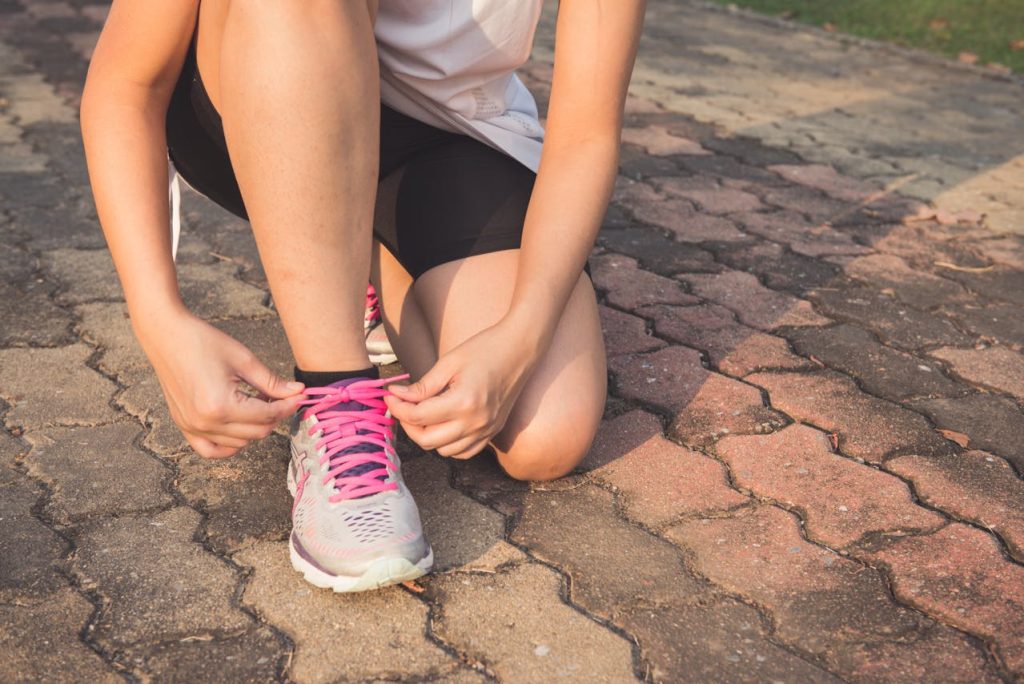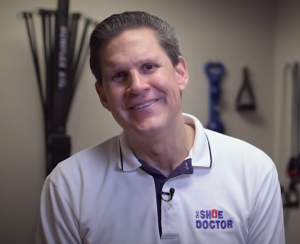Custom orthotics offer a fit tailored to your individual foot, while store-bought insoles employ a one-size-fits-most approach. A lot of readers want to know if custom orthotics are worth the steep price when compared to budget-friendly insoles from a retailer. Custom orthotics begin with a scan or mold of the foot and attempt to address specific points of pain or support, so they cost more and take more time. Store-bought insoles are convenient to purchase and less expensive, but they might not suit every foot or requirement. While some people find relief with simple insoles, there are others who require the support that only custom-made orthotics provide. To aid in your decision, check out how they each stack up in comfort, cost, and support below.
Key Takeaways
- Custom orthotics, on the other hand, are specifically designed for your unique foot structure and requirements, providing specialized support for intricate foot issues that mass-market insoles might miss.
- Although store-bought insoles are easy to obtain and inexpensive, they typically offer only rudimentary cushioning and minimal arch support, rendering them insufficient for individuals with specialized foot biomechanics or persistent pain.
- Custom orthotics can give you those long-term health benefits — better foot alignment, less risk of future injuries, and perhaps even lowered overall medical costs.
- With custom orthotics, the process is vastly more involved—foot evaluations, impressions, material choices and fitting—all of which make them comfortable, durable, and biomechanically supportive.
- Research and professionals note that custom orthotics are substantially better at alleviating foot discomfort, facilitating movement and helping the rest of the body move more efficiently than off the shelf versions.
- Readers with lingering foot pain, specific medical conditions or who tend to wear their soles down fast should go see a good specialist and find out if custom orthotics are right for you.
The Core Difference
Custom orthotics and store-bought insoles serve the same broad goal: to cushion, support, and help align the foot within a shoe. Their core distinction is in the fit + purpose. Specify custom orthotics built around your own foot and medical-grade support. Store-bought insoles, on the other hand, utilize a one-size-fits-most method and are designed for general comfort. Foot mechanics–how each of us stands, walks and runs–are a huge factor in how beneficial each is. For people with complicated foot issues or medical requirements, though, custom orthotics tend to perform better because they’re crafted for those specific needs, not generic ones.
Custom Orthotics
Custom orthotics begin with a thorough evaluation, typically by a podiatrist, who studies how an individual’s foot moves and where points of pain or pressure are. These gadgets are constructed using a mold or digital scan of the foot, considering things like arch height, heel location and even weight distribution.
The materials for custom orthotics run the gamut. Some are plush, intended to cushion impact for the tender-footed. Others employ hard plastics or carbon fiber to provide more rigid support, required for extreme flat feet or foot deformities. The decision is based on the user’s needs and health, thereby optimizing comfort and support for each individual.
A podiatrist is central to the procedure. They take into account medical history, existing foot problems, and gait analysis in developing these units. This renders custom orthotics a prime selection for diabetics, arthritics or those with irregular feet.
Custom orthotics can additionally enhance general foot health over time. By normalizing gait they assist in decreasing knee, hip and back pain too.
Store-Bought Insoles
Over-the-counter or store bought insoles are readily available and simple. You can grab ’em at most grocery stores or drugstores, no appointment necessary.
They exist in a variety of styles. Some provide a bit of cushioning for your weary soles, others include additional arch support. The selection is generally easy — grounded in either that which feels good or what’s on the shelf.
These insoles aren’t as effective for complicated foot issues. Their crude, generic form can’t compare to the support required for extreme deformities or chronic pain. For the majority, they assist with minor aches or fatigue from standing for hours.
Their low price is a big reason why people give them a try in the first place. Most pairs are cheaper than dining out, so it’s a no brainer move for those on a budget.
Are Custom Orthotics Worth It?
Deciding between custom orthotics and store-bought insoles is all about considering price, comfort, support and your feet’s long-term health. They both have advantages and disadvantages based on your needs and foot health.
The Cost
Custom orthotics are way more expensive, typically $200 to $800 on top of the cost of specialist visits. Store-bought insoles cost far less, typically $35-60 USD. Insurance may contribute to the cost of custom orthotics, but numerous plans either do not include them or reimburse only a portion of the expense. Others doubt they’re worth the cost because the materials and labor frequently total less than $100.
Yet, for others, the cost of custom orthotics can prove worthwhile over time. If you have chronic foot pain or issues you could reduce visits to the doctor or missed work from pain. Over-the-counter insoles often don’t correct the underlying cause — setting you up for unseen expenses from deep foot injuries.
The Lifespan
Over-the-counter insoles wear out quickly, typically in six months or less, based on usage and composition. Custom orthotics cost more, but they last longer – two years or more – because they use better materials and are made for your feet.
How long orthotics last really depends on how much you use them, your weight, and what activities you take part in. If your foot shape shifts or you start a new sport, you may need to swap out your orthotics sooner. Having your provider check on them helps ensure the fit and support remain correct.
The Support
Custom orthotics provide support crafted specifically for your foot. For instance, they assist plantar fasciitis or flat feet by molding to your foot and correcting your stride. Yes, store-bought insoles feature arch support, but not for your foot specifically.
Proper foot alignment is critical to your entire body, not just your feet. With the proper orthotics, your knees, hips and back can rest easy as well. This new comfort can aid you with sports or long days.
The Relief
Custom orthotics can relieve pain caused by heel spurs, arthritis, or chronic foot pain. Folks report they really notice differences early, experiencing less discomfort and increased fluidity of motion. Others discover over-the-counter insoles get the job done for minor problems, such as sore arches or fatigued feet.
The mental boost from less pain can be just as important as the physical.
When To Choose Custom
Custom orthotics aren’t always necessary, but sometimes, they provide obvious advantages to over-the-counter insoles. Knowing when to go custom can help you make informed decisions about your foot health, particularly if you have pain that won’t abate or complicated movement requirements.
Specific Conditions
- Bunions and bunionettes
- Stiff big toe (Hallux Rigidus)
- Flat feet (low arches) or high arches
- Chronic heel pain (plantar fasciitis)
- Overpronation or supination
- Diabetes-related foot problems
Individuals with very specific foot shapes or structures—like extremely high arches, extremely flat feet, or deformities—often require personalized support. Off-the-shelf insoles just don’t lie well on these feet, resulting in persisting pain or discomfort. For example, someone suffering from a bunion might experience no alleviation of pressure from off-the-shelf insoles, while custom orthotics can be designed to address the specific source of pain. They can address biomechanical problems, such as how the foot pronates with each step. Early care is key for chronic issues, so asking for custom help early may prevent minor concerns from escalating.
Activity Level
- Sedentary (mostly sitting or standing in place)
- Moderate activity (walking, light exercise)
- High-impact sports (running, jumping, court games)
It matters to match orthotic support to your lifestyle. If you’re an athlete or have a job where you’d originate a lot, your feet take a lot more stress than if you mostly sit. Athletes, particularly those involved in running or court sports, typically require custom orthotics tailored to their specific sport, providing enhanced control and mitigating the risk of injuries. For active individuals, quality support can keep the aches at bay and may actually enhance performance.
Body Mechanics
Orthotics fundamentally alter the mechanics of your body. By mimicking your foot’s actual form, they work to align your legs and back, potentially relieving strain in the knees, hips or even lower back. The connection between foot alignment and whole-body health is powerful–tiny tweaks in the feet can translate into dramatic adjustments further upstream. Gait analysis, which examines your walking pattern, is a great asset for determining whether custom orthotics are the right choice for you. Correcting the way our feet function can translate into less strain and improved mobility, whether you’re managing chronic pain or hoping to maximize performance.
When To Consult
Consult a podiatrist. Schedule an early appointment if it hurts for longer. Take a crack at custom orthotics if the off the shelf stuff fails. Trust your body.

The Creation Process
Custom orthotics go through a detailed process that starts with expert evaluation and ends with a fitting tailored to each person’s needs. This process sets them apart from store-bought insoles, which are usually mass-produced and lack any personalized assessment.
Professional Evaluation
A certified specialist, often a podiatrist or a Pedorthist, leads the first step. They use medical history, physical exams, and questions about activity level and pain points to understand the patient’s foot needs. This evaluation is key for people with conditions like diabetes, arthritis, or complex foot disorders.
The specialist examines the mechanics of each foot both in motion and at rest. They check for things such as high insteps, fallen arches, or irregular gait. Knowing these mechanics is essential to choose the proper orthotic path.
These days, clinics utilize gait analysis and pressure-mapping tools. These assist identify balance problems, pressure locations, and weight distribution during motion. Technology provides data that refine your design.
Experience counts. The provider considers the patient’s weight, daily activity and footwear. Their epiphany informs everything moving forward – from the look and feel to collateral.
Foot Impression
To create a well-fitting orthotic, the provider needs to record an accurate footprint. This is accomplished by putting the individual into a “Stomp Box” with foam, or occasionally 3D scanners. The foot has to be in a neutral stance to get a mold.
Getting the contours right means the arch height of the orthotic corresponds to the foot from heel to toe. This is vital for total support and comfort with severe foot deformities.
New technology, such as digital scanning, has helped make these impressions more precise. It minimizes mistakes and accelerates the process.
A good fit isn’t just for comfort. It assists the orthotic in doing its job, relieving pain and supporting motion.
Material Selection
Orthotics rely upon EVA foam, carbon fiber, or thermoplastic materials. They all have their own advantages and disadvantages in terms of shock absorption, flexibility and support.
Support and comfort need to be equilibrated. EVA foam pads have a soft feel and suit low impact applications, whereas carbon fiber pads are stiff and endure longer under intense activity loads.
Material selection impacts the orthotic’s durability. Or heavier folks/athletes who might require harder materials to avoid degradation.
Manufacturers are able to adjust the blend of fabrics, insert panels, or bulk up specific zones. This allows every pair to fit the user’s needs and preferences.
Final Fitting
The final step is fitting the orthotic inside the shoe and looking for pressure points.
If it’s tight or chafes, the maker makes adjustments. This step is crucial for long-term ease.
Follow-up visits monitor any changes in comfort or foot shape. Adjustments or resurfacing, which costs $50–$100, may be required down the road.
It’s this right fit that allows a custom orthotic to provide its full benefit.
What The Science Says
Research on custom orthotics versus add-on store insoles is mixed. Clinical studies compare both for foot pain, mobility and function. Other studies find no significant difference in pain reduction or walking comfort between bespoke and pre-made orthoses, even a year later. Here’s a quick rundown of highlights from peer-reviewed research.
Study | Duration | Group | Pain Relief | Mobility | Notes |
Study A | 12 months | Custom vs. Prefab | No significant difference | No significant difference | Both groups improved |
Study B | 3 months | Custom | Moderate improvement | Slight improvement | Sample funded by orthotics maker |
Study C | 6 months | Prefab | Moderate improvement | Slight improvement | Similar outcomes to custom group |
Numerous podiatrists note that custom orthotics do provide customized support, molded to the shape of the foot. This can assist specific individuals with irregular foot anatomy or constant medical concerns, such as diabetes or serious deformities. For the average non-expert, the specialists skew more towards a cautious approach. Studies highlight that the typical mild pain or special needs user often receives about as much relief from a well-selected prefab insole.
Pain science provides a new twist. It demonstrates that pain is about more than tissue damage — it’s about how the brain interprets input. Custom orthotics can alleviate symptoms but don’t address underlying causes if it’s muscle weakness or bad movement patterns. Indeed, long-term use of custom orthotics can sometimes result in weaker muscles in the feet and lower legs, as the device does so much of the work, which can induce a feedback loop of the foot becoming more reliant on external support.
Your foot has nearly 100 muscles below the knee that play a role in balance and support. Weakness in these muscles can cause orthotics to be required. Others caution that chronic custom orthotic use can, in fact, weaken the foot and leg, not bolster it, over time.
Studies on custom orthotics continue to emerge. Some studies are funded by makers or clinics with a stake in results, muddying the data. New work is examining better materials, 3D printing and how to best tailor support to movement patterns. For the time being, the bulk of the data indicates that custom orthotics, in many cases, are not the optimal solution for typical foot discomfort or simple support requirements.
Potential Risks and Missteps
Decision between custom orthotics and store-bought insoles is not simply a question of cost or convenience. Both carry potential risks, particularly for individuals with idiosyncratic feet, localized pain, or chronic conditions. Pharmacy orthotics are created from stock molds and sculpted for the ‘normal’ foot. That means that anyone with feet that don’t conform to these standard shapes—like having high arches, flat feet or different sized feet—might be left without a proper fit. A bad fit can cause chafing, pressure points, or even fresh pain in the heel, arch or ankle. For instance, a runner with one leg just a bit longer than the other could discover that a generic insole results in one foot lacking support, potentially leading to knee or back issues over the years.
An improper fitting is not only uncomfortable, but can lead to injury. Those with existing heel, achilles or even chronic back problems are most at risk. Mass-produced inserts might cover up the issue, rather than correct it. Say, for example, that you have plantar fasciitis and pop in a store bought insole — you’ll experience some relief initially, but the mismatch of support can allow the issue to aggravate, not mitigate. This risk multiplies when individuals bypass professional guidance and attempt to self-diagnose or self-medicate. Without a check from a doctor or podiatrist it’s easy to select the wrong insole, prolonging pain or even causing new problems.
Store-bought insoles, for example, are usually made from low-quality materials that decompose in as little as a few months. This translates to more replacements and more expensive ones at that. Dusty discount inserts that break down, flatten or shift leave feet unsupported and pain returns. They might not realize support is slipping away until their pain comes back. Continued monitoring by a physician is essential, as feet and gait can evolve with age, weight gain or injury. Without these checks, even custom orthotics can go awry and cause issues down the road.
Conclusion
Custom orthotics cure foot pain with a precise fit, and store-bought insoles provide immediate relief for less. For chronic pain or unusual foot contours, custom orthotics tend to perform better. Over-the-counter insoles are good for a little ache or as a temporary solution. Both options have their benefits and drawbacks. Science supports custom orthotics for certain types of foot problems, but not for all. Deciding what’s right for your needs saves both time and money. Health shifts rapidly, so consult a podiatrist if you sense uncertainty. Care for more foot, tech and wellness tips? Jump into the blog for practical tutorials and additional survivor accounts. Your feet count—stay moving strong.
Frequently Asked Questions
1. What is the main difference between custom orthotics and store-bought insoles?
Custom orthotics are made for your specific foot. Store-bought insoles are more affordable and widely used because they offer general comfort for the average foot. Custom solutions typically address specific medical needs.
2. Are custom orthotics more effective than store-bought insoles?
Custom orthotics can provide superior support and comfort to individuals with certain foot issues. For general comfort, store-bought insoles may be sufficient. It depends on your unique foot needs.
3. Who should consider custom orthotics?
If you have chronic foot pain, flat feet, high arches, or a medical condition, you could be a good candidate for custom orthotics. If you experience persistent pain, see a doctor.
4. How are custom orthotics made?
Custom orthotics are constructed from a detailed evaluation of your feet. This could include scans, molds, or impressions. The end result is a device designed specifically for you.
5. Are there risks with using the wrong type of insole?
Yes, picking the wrong insole can result in pain, exacerbate foot issues, or create new ones. The key is finding the right support and consulting a pro if you’re unsure.
6. Do custom orthotics last longer than store-bought insoles?
Custom orthotics typically last longer because of their higher-quality materials and tailored design. Store-bought versions wear out faster with regular usage.
7. What does research say about custom orthotics?
Research indicates custom orthotics can benefit those with specific foot issues. For those without specific problems, the advantages over store-bought insoles could be marginal.
Stop Letting Foot Fatigue Slow You Down — Get Relief With Custom Orthotics From The Shoe Doctor
If your feet feel sore, heavy, or worn out after a long day, custom orthotics could be the game-changer you’ve been looking for. Whether you’re on your feet for work or daily errands, fatigue often comes from poor support, uneven pressure, and misalignment. Our custom orthotics are built to correct those issues—supporting your arches, improving posture, and helping you stay energized throughout the day.
At The Shoe Doctor, we’ve spent over 20 years creating orthotics that do more than cushion your feet—they target the root causes of pain and fatigue. Using advanced 3D foot-mapping technology, Russell designs orthotics tailored to your foot structure and walking style. Through our partnership with the Spine & Injury Medical Center in San Jose, we also take your overall body mechanics into account to support lasting results.
Located in the South Bay Area? Book your free consultation today and see how custom orthotics from The Shoe Doctor can help you move with comfort, confidence, and less fatigue.
Disclaimer
The materials available on this website are for informational and entertainment purposes only and are not intended to provide medical advice. You should contact your doctor for advice concerning any particular issue or problem. You should not act or refrain from acting based on any content included in this site without seeking medical or other professional advice. The information presented on this website may not reflect the most current medical developments. No action should be taken in reliance on the information contained on this website, and we disclaim all liability for actions taken or not taken based on any or all of the contents of this site to the fullest extent permitted by law.


